New Mexico
Baseball dominated on the road by New Mexico, 19-5

The San Diego State baseball team falls in the second game of the series against New Mexico, 19-5, at Santa Ana Star Field.
This is now the Aztecs’ eighth straight loss and is one loss away from being swept for the fifth time this season. The Aztecs have lost nine of their last 10 games. This is also the first time since 2019 that New Mexico (22-19, 11-9 Mountain West) has won a three-game series against the Aztecs.
The batting and pitching department had a difficult time trying to get anything going. The Aztecs (11-31, 5-15) couldn’t get a hit until the fourth inning. At that point, they were already down by five runs.
The five-run ninth inning was the only time throughout the game that the Aztecs managed to come up with any offense.
Aztecs starting pitcher Omar Serrano made his 11th start of the season. Against the Lobos, Serrano pitched five innings allowing seven runs on nine hits, three strikeouts and walked two batters.
The Aztecs’ pitching rotation allowed a season-high 19 runs to score and gave up 16 hits, the second-highest this season (20).
New Mexico’s starting pitcher Brett Russell dominated the mound allowing no runs on three hits with seven strikeouts through seven innings.
There was a laundry list of New Mexico players that had a productive afternoon. Will Asby went 3-5 with three singles and an RBI. Second baseman Josh McAlister launched a home run in the fifth, the Lobos second of the game. Designated hitter Gene Trujillo hit a three-run home run in his only at-bat during the eighth inning.
The Lobos had nine different batters register with an RBI. Additionally, they had five hitters end with at least two RBIs.
Designated hitter Zane Kelly and second baseman Cade Martinez were the only players on SDSU to record an RBI.
Following the games on Sunday and Tuesday, the Aztecs will enter the last month of the regular season and have an opportunity to end the regular season on a high note before the start of the Mountain West Championships.
The Aztecs have a chance to avoid getting swept tomorrow in the third and final game of the series.

New Mexico
7 Most Inviting Towns in New Mexico
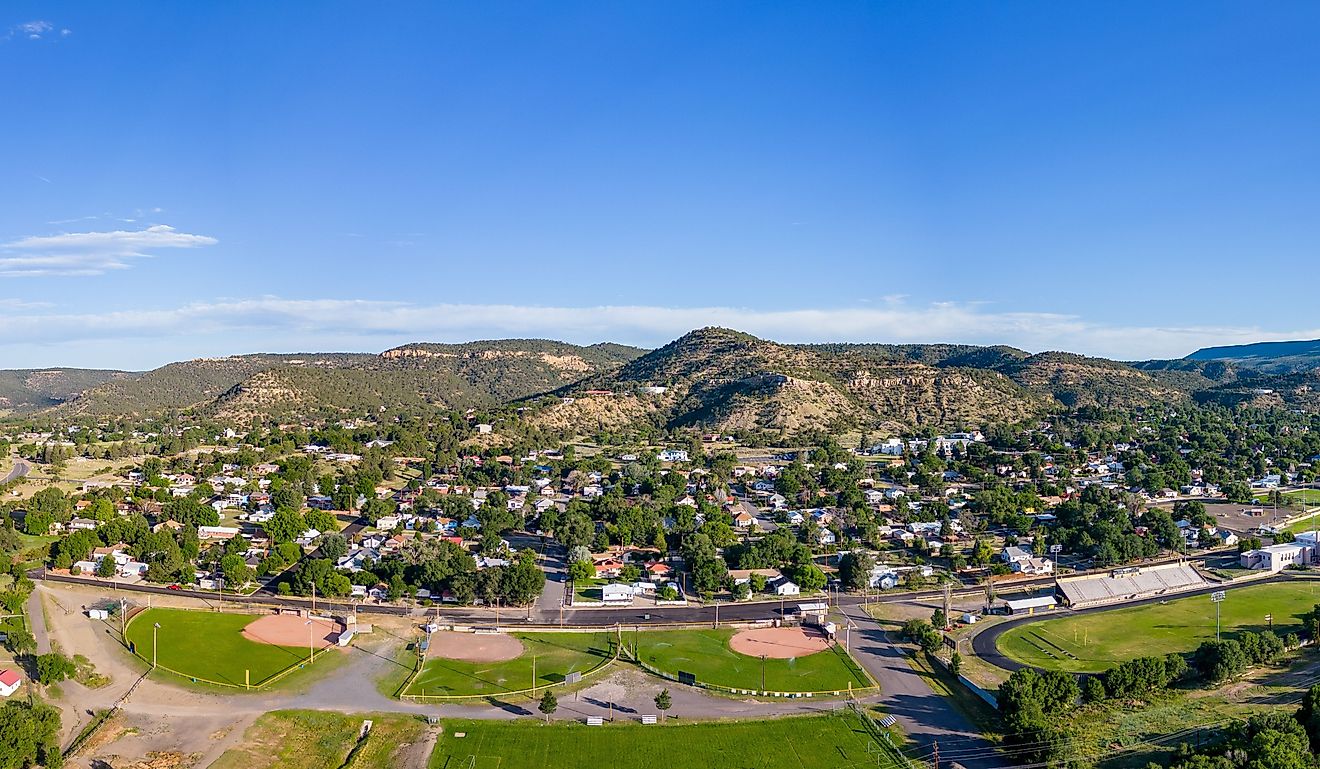
When you travel, one of the best feelings is going to a warm and welcoming town. While you know a welcoming town when you experience one, it’s harder to define what makes a place inviting. A combination of vibrant culture, history, natural places, and passionate people all contribute to making a town inviting. In New Mexico, this is what the most welcoming towns have in common. Madrid, for example, has a vibrant community with art galleries and a rich history. Jemez Springs invites people to the natural scenery and famous hot springs. These are only a few of the most inviting towns in New Mexico. Here, we will explore New Mexico’s seven most inviting towns.
Madrid
One of the most welcoming towns in New Mexico is Madrid. The small town has under 300 residents, but despite its small size, there is a vibrant community. Madrid is well known as a funky, artistic community in the narrow canyon of the Ortiz Mountains. There are many art galleries, shops, boutiques and museums throughout the town. One of the best galleries in town is the Johnsons of Madrid Galleries which features the work of Mel Johnson plus 100 other local artists.
While Madrid is a thriving art community today, the town wasn’t always this way. In fact, Madrid used to be a mining town. However, when the coal market collapsed, the town became a ghost town. In the 60s and ’70s hippies and artists settled in the community, making the warm, vibrant community that exists today. The Madrid Old Coal Town Museum, explains more about the town’s history.
Corrales
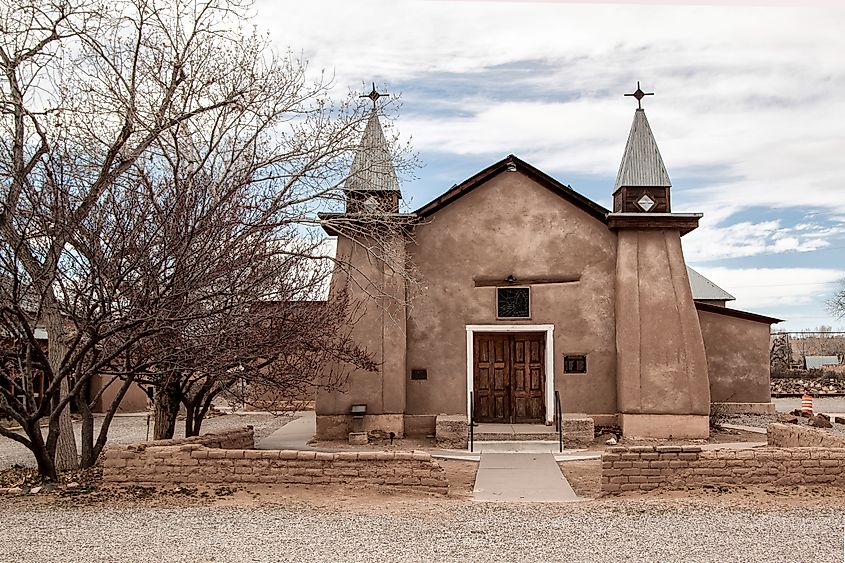
Corrales, New Mexico, is a bigger town than Madrid, with a population of around 9,000. However, Corrales still maintains its inviting rural, small-town atmosphere. The area has agricultural heritage, and the community celebrates all things local. Many people in the town live a rural lifestyle. There are many farms selling fruits and vegetables available at the local Growers Market. There are farms to visit to grab local produce and goods as well. For example, Heidi’s Raspberry Farm sells an assortment of jams using USDA Certified Organic Raspberries.
There are also historic buildings in Corrales giving an idea of what life was like in the old town. The Casa San Ysidro is a restoration of an adobe home built in the 1870s. The town has festivals throughout the year that celebrate the community and local culture. Some of the festivals include the Garden Tour, Corrales Art Studio Tour, the Harvest Festival, the Scarecrow Festival, and the Starlight Parade.
Jemez Springs
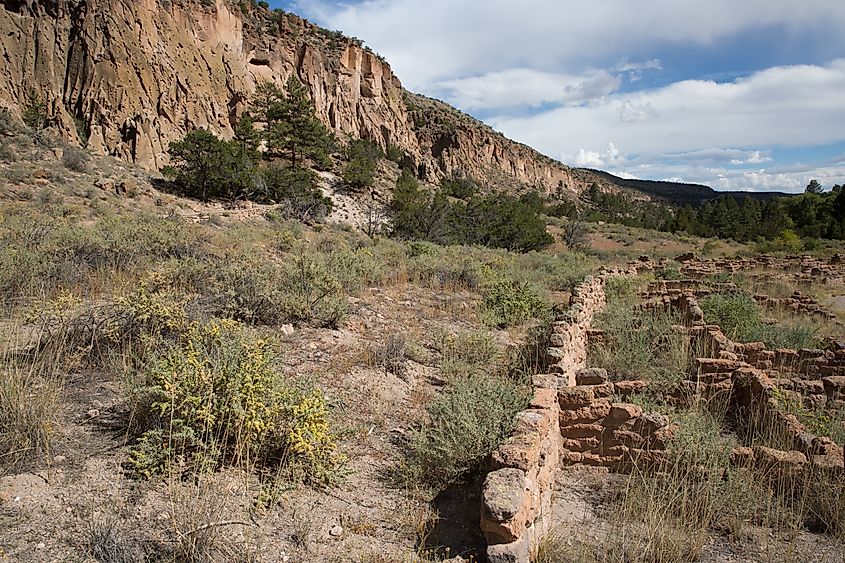
A small town that shows off the inviting charm of New Mexico’s outdoors is Jemez Springs. The town is north of Albuquerque along the Jemez Mountain Trail National Scenic Byway. People have been traveling to the area since the 1800s to experience the nurturing hot springs. There are natural hot springs to enjoy as well as secluded, more luxurious hot springs. The Jemez Springs Bath House offers cool or hot mineral soaks and healing massages. Some of the natural hot springs to enjoy outdoors include McCauley Warm Springs, Spence Hot Springs, and San Antonio Hot Springs. Beyond the hot springs, there is a lot of natural beauty to enjoy in the town, including the wilderness of the Santa Fe National Forest and Valles Caldera Preserve. Fenton Lake State Park is a local camping spot with the backdrop of the Jemez Mountains. The beautiful scenery in Jemez Springs invites people to unplug and connect to nature and the community.
Tucumcari

Tucumcari is a small town that invites you with nostalgia. Home to murals, roadside motels, diners, and museums, Tucumcari is one of the most interesting towns to explore. The town even has its own drive-in movie theater, Foxy Drive-In, which first opened in 1956. Walk around town and enjoy the small business that invites you in with its historic charm.
To learn more about the town’s history, visit the Tucumcari Historical Museum. There is also the Mesalands Community College Dinosaur Museum. This museum has the world’s largest collection of full-scale bronze dinosaur skeletons. Tucumcari also has colorful murals around town, including one of the world’s largest murals devoted to Route 66 in the United States.
Santa Rosa

Situated on the Pecos River is the beautiful town of Santa Rosa. Full of picturesque stone buildings in the historic district, Santa Rosa invites people to relax and enjoy the scenery. There are many recreational trails around town, making for a friendly, outgoing community atmosphere. Santa Rosa’s claim to fame is the Blue Hole. The natural artesian spring is 81 feet deep and is a popular spot to scuba dive. The Blue Hole has earned Santa Rosa the title of the “Scuba Diving Capital of the Southwest.”
Above all, Santa Rosa values community. Some of the local businesses have been around for decades, such as Silver Moon Cafe. The restaurant is a local staple and first opened in 1959. Today, it is well known for its signature New Mexican dishes and American favorites.
Raton
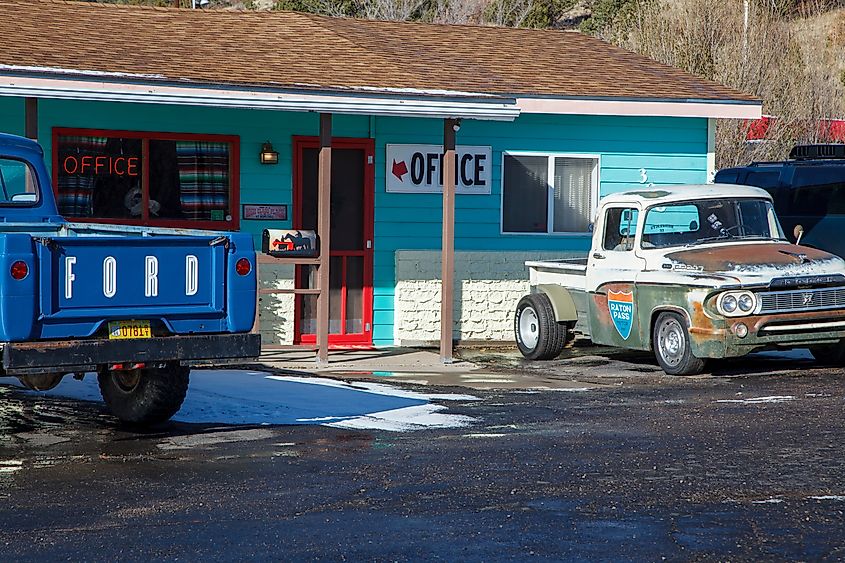
Similar to other towns on this list, Raton is a small town in New Mexico known for its outdoor scenery. Situated in the Rocky Mountains, Raton is the highest point on the Historic Santa Fe Trail. Around town, there are dazzling views of the Sangre de Cristo Mountains. Around Raton there are many opportunities to explore and enjoy nature. Sugarite Canyon State Park is near town and is great spot to enjoy some hiking.
While Raton is a small town with a population of under 6,000 people, the people are proud of their heritage. This shows in the local cuisine. Many local restaurants make use of the green Chile and unique regional cuisine. Overall, the relaxed way of life in Raton makes it an inviting town to explore.
Mountainair
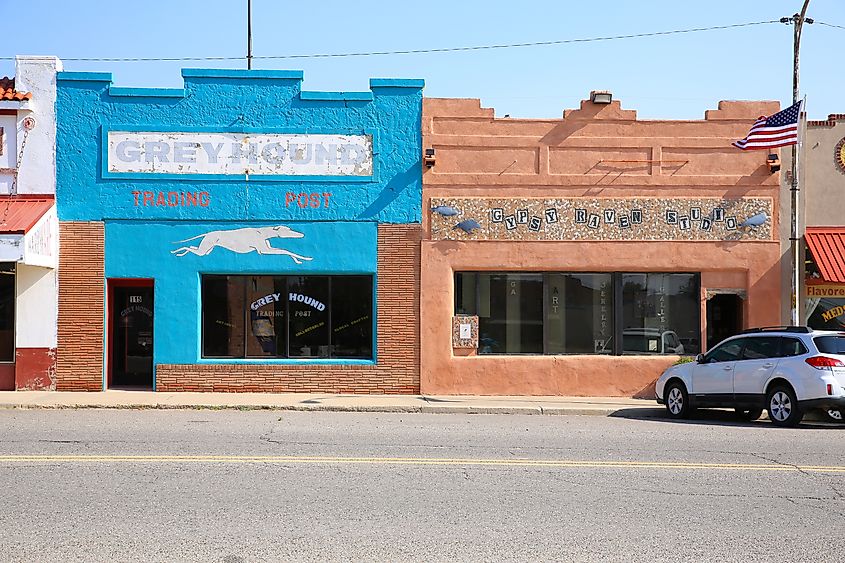
The small town of Mountainair in New Mexico has a welcoming vibe combined with stunning scenery. The charming town has historic ruins, art galleries, charming shops, forest trails, horseback riding, mountains, and hiking trails to explore. Historic sites in town merge the past with the present. There are three major historic sites that attract historians and visitors every year to the town. The Ancient Cities of Mountainair are Abó, Quarai, and Gran Quivira. The community also hosts festivals throughout the year, including the annual Sunflower Festival in August.
All the towns on this list are warm and welcoming places to go. Whether you are looking to plan a road trip or move to a new town, these small towns in New Mexico would make a great destination. After visiting any of these small towns, you will want to call them home after only a few days. The vibrant culture, history, local businesses, and nature make for an inviting atmosphere.
New Mexico
NM Gameday: May 17

Any person with disabilities who needs help accessing the content of the FCC Public File may contact KOB via our online form
or call 505-243-4411.
This website is not intended for users located within the European Economic Area.
© KOB-TV, LLC
A Hubbard Broadcasting Company
New Mexico
Ruidoso’s Water Park Ready to Kick Off Summer with a Splash

Good news for those looking to beat the heat this summer, a unique floating water park is just a short drive away in Ruidoso, New Mexico!
Ruidoso is already among the favorite nearby spots for El Pasoans to cool off from the desert heat, but did you know it is also home to this unique water attraction?
The Ruidoso Parks and Recreation department just announced that Wibit will make a return his summer to Grindstone Lake! And the update they shared will have you thinking of spending your entire summer there!
Wibit Water Park at Grindstone Lake is an inflatable platform made up of giant slides, towers, trampolines, ramps, and wiggle bridges. Adventurous kids of all ages can bounce, slide, climb, jump and splash in the water.
Wibit Water Parks are typically found in tourist destinations, public beaches, resorts, and aquatic centers, offering a fun and interactive experience for visitors of all ages. They are designed to be safe, with rigorous safety standards and supervision often provided by trained lifeguards.
Wibit Water Park to Open in Ruidoso, New Mexico
Ruidoso is situated in the south-central part of New Mexico, nestled in the Lincoln National Forest. The area is characterized by its alpine environment, with lush forests, clear streams, and impressive mountain views. The elevation ranges from 6,920 feet in the village to over 12,000 feet at the peak of Sierra Blanca, which provides a cool climate and ample opportunities for outdoor activities. You can get more info, and find out about more summer activities in Ruidoso, here.
10 Tourist Traps to Avoid in New Mexico
Are you visiting New Mexico for the first time or simply exploring the state you call home? Either way, you probably will want to avoid thee tourist traps:
10 of the Most Haunted Locations to Check Out in New Mexico
Gallery Credit: Daniel Paulus
-

 Politics1 week ago
Politics1 week agoOhio AG defends letter warning 'woke' masked anti-Israel protesters they face prison time: 'We have a society'
-

 Finance1 week ago
Finance1 week agoSpring Finance Forum 2024: CRE Financiers Eye Signs of Recovery
-

 Politics1 week ago
Politics1 week agoBiden’s decision to pull Israel weapons shipment kept quiet until after Holocaust remembrance address: report
-

 World7 days ago
World7 days agoIndia Lok Sabha election 2024 Phase 4: Who votes and what’s at stake?
-

 News1 week ago
News1 week agoThe Major Supreme Court Cases of 2024
-

 News1 week ago
News1 week agoTornadoes tear through the southeastern U.S. as storms leave 3 dead
-

 World1 week ago
World1 week agoA look at Chinese investment within Hungary
-

 Politics1 week ago
Politics1 week agoTales from the trail: The blue states Trump eyes to turn red in November




:quality(70):focal(1235x1175:1245x1185)/cloudfront-us-east-1.images.arcpublishing.com/shawmedia/B7OEBXHQ75HJXOZIR6TGOOXRVY.jpg)










